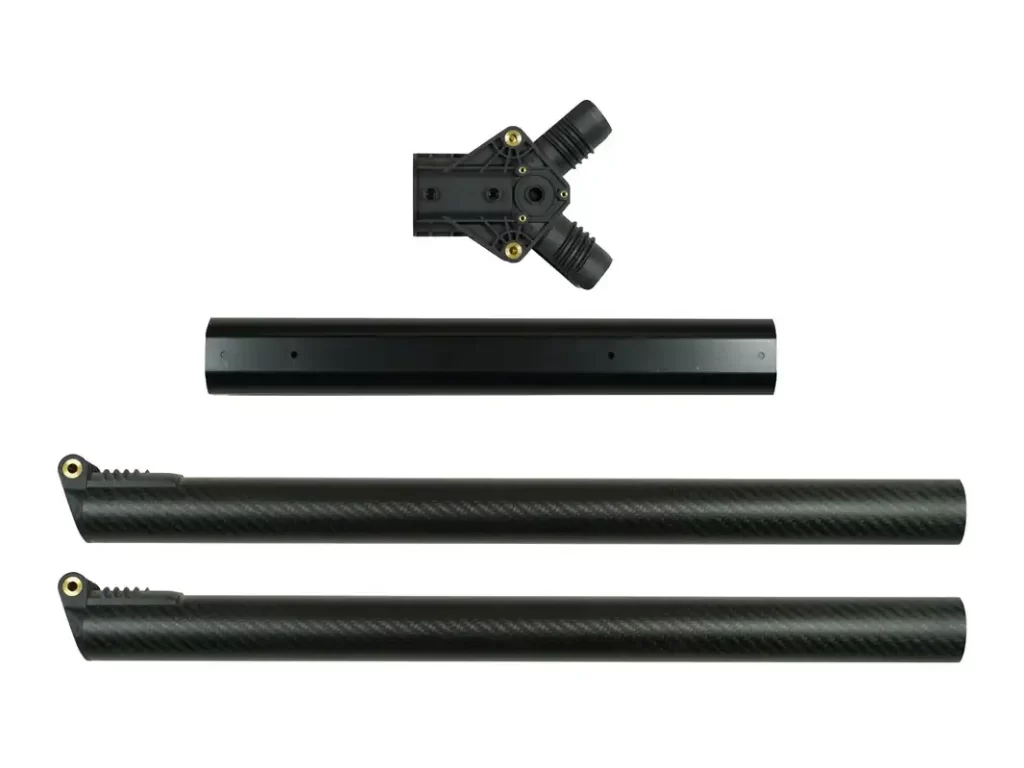Agricultural drones have revolutionized modern farming by providing efficient and precise methods for tasks like seeding, spraying, and crop monitoring. A crucial component of these drones is their arms, which often house the propellers, motors, and sometimes even sensors. The choice of material for these arms plays a significant role in the drone’s performance, durability, and overall efficiency. Carbon fiber has emerged as the preferred material for drone arms, particularly in the agricultural sector. Here’s a guide to help you choose the right carbon fiber arms for your agri-drone.

1. Why Carbon Fiber?
Carbon fiber is a material known for its high strength-to-weight ratio, stiffness, and resistance to corrosion. For agricultural drones, these properties are essential because:
- Lightweight: Reduces the overall weight of the drone, allowing for longer flight times and higher payloads.
- Strength: Withstands the stress and strain from carrying heavy loads such as pesticides or seeds.
- Durability: Resistant to weather, chemicals, and impacts, making it ideal for rough agricultural environments.

2. Considerations When Choosing Carbon Fiber Arms
A. Tube Size and Shape
The size and shape of the carbon fiber tube are critical for ensuring optimal performance.
- Diameter and Wall Thickness: A larger diameter and thicker wall can handle more load but will add to the weight. For agricultural drones, balancing strength with weight is crucial. Typical sizes range from 16mm to 30mm in diameter.
- Shape: Round tubes are common, but square or rectangular profiles may provide better stability and ease of attachment for other components.
B. Weight and Load Capacity
The drone’s arms must support not only the weight of the drone itself but also the additional load of seeds, fertilizers, or pesticides. Carbon fiber arms must be strong enough to handle these loads without compromising on weight. Calculate the total load your drone will carry and choose arms that provide a good balance between strength and weight.
C. Machining and Customization
Agricultural drones often require customization to fit specific needs. The carbon fiber arms should allow for:
- CNC Machining: Precision cuts and holes for attaching motors, sensors, or other equipment.
- Threading: If you need to attach or detach components frequently, threading services can be invaluable.
- Labeling and Printing: For branding or identification, consider whether the arms can be printed with logos or have labels applied.
D. Environmental Resistance
Agricultural drones operate in varied and often harsh environments. The carbon fiber arms should be resistant to:
- Moisture: Ensure that the arms have a protective coating or are made from resin-rich carbon fiber that resists water ingress.
- Chemicals: Drones used for spraying should have arms that are resistant to the chemicals in fertilizers and pesticides.
- UV Radiation: Long exposure to sunlight can degrade some materials, so consider UV-resistant coatings.
3. Choosing a Supplier
Selecting the right supplier is as important as choosing the right material. Look for manufacturers with experience in producing carbon fiber components for drones. Consider suppliers who offer:
- Customization options: Ability to produce arms to your specifications.
- Quality assurance: Ensure that the tubes meet industry standards for carbon fiber products.
- Support: Technical support for selecting, installing, and maintaining the arms.

4. Future Trends in Carbon Fiber for Agricultural Drones
As technology evolves, we can expect advancements in carbon fiber materials, including:
- Hybrid Materials: Combining carbon fiber with other materials to enhance specific properties such as flexibility or impact resistance.
- Smart Materials: Incorporating sensors within the carbon fiber to monitor stress, temperature, or other factors in real-time.
- Sustainable Production: Innovations in eco-friendly carbon fiber production processes to reduce the environmental impact.
Conclusion
The choice of carbon fiber arms for agricultural drones is a crucial decision that can significantly impact the drone’s performance, durability, and efficiency. By considering factors like size, weight, machining options, and environmental resistance, you can ensure that your drone is equipped with the best possible arms to handle the rigors of modern farming. Always work with reputable suppliers to ensure you’re getting high-quality, reliable products that meet your specific needs.
Investing in the right carbon fiber arms will not only enhance your drone’s capabilities but also contribute to more efficient and sustainable farming practices.

